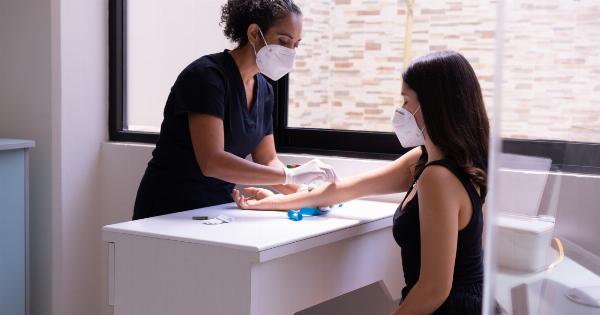Human papillomavirus (HPV) is a common sexually transmitted virus that can cause genital warts and put women at risk of developing cervical cancer. The HPV-DNA test is a screening test that can detect the presence of HPV in cervical cells.
The test is different from a Pap test, which looks for abnormal cells in the cervix that could turn into cancer.
What is an HPV-DNA test?
An HPV-DNA test is a laboratory test that detects the DNA of high-risk types of the human papillomavirus (HPV) in cervical cells. The test is used to screen women for cervical cancer or to monitor women with a history of HPV infection.
Who should get an HPV-DNA test?
The HPV-DNA test is recommended for:.
- Women over the age of 30
- Women who have had an abnormal Pap test result in the past
- Women who have a history of HPV infection
- Women who have a weakened immune system
The American Cancer Society recommends that women ages 30 to 65 have an HPV test and a Pap test every five years (co-testing) or a Pap test alone every three years.
How is an HPV-DNA test done?
The HPV-DNA test is done during a pelvic exam, just like a Pap test. The healthcare provider will collect a sample of cervical cells using a small brush and send the cells to a lab for testing.
How accurate is the HPV-DNA test?
The HPV-DNA test is a highly accurate test for detecting the presence of high-risk types of HPV. However, the test is not perfect and can give false-positive or false-negative results.
A false-positive result means that the test shows that you have HPV when you do not. This can cause anxiety and lead to unnecessary follow-up tests and procedures.
A false-negative result means that the test shows that you do not have HPV when you do. This can give women a false sense of security and delay diagnosis and treatment.
Should you get an HPV-DNA test annually?
The frequency of HPV testing depends on your age and risk factors for cervical cancer.
If you are under the age of 30 and have no symptoms or abnormal Pap test results, you do not need to have an HPV-DNA test.
If you are over the age of 30 and have no symptoms or abnormal Pap test results, you may consider having an HPV-DNA test every five years along with a Pap test.
If you have a history of abnormal Pap test results or HPV infection, your healthcare provider may recommend more frequent testing.
If you have been vaccinated against HPV, you may still need to have regular Pap tests and HPV tests to screen for other types of HPV that are not covered by the vaccine.
What are the benefits of getting an HPV-DNA test?
The benefits of getting an HPV-DNA test include:.
- Early detection of HPV infection, which can lead to early treatment and prevention of cervical cancer
- Reduced need for frequent screening and follow-up if the results are negative
- Increased peace of mind for women who test negative for HPV
What are the risks of getting an HPV-DNA test?
The risks of getting an HPV-DNA test include:.
- Anxiety and stress from waiting for test results
- False-positive or false-negative results
- Unnecessary follow-up tests and procedures
Conclusion
An HPV-DNA test is a highly accurate test for detecting the presence of high-risk types of HPV in cervical cells. The test is recommended for women over the age of 30 and those who have a history of abnormal Pap test results or HPV infection.
The frequency of testing depends on your age and risk factors for cervical cancer. By detecting HPV infection early, women can receive early treatment and prevent the development of cervical cancer.




























